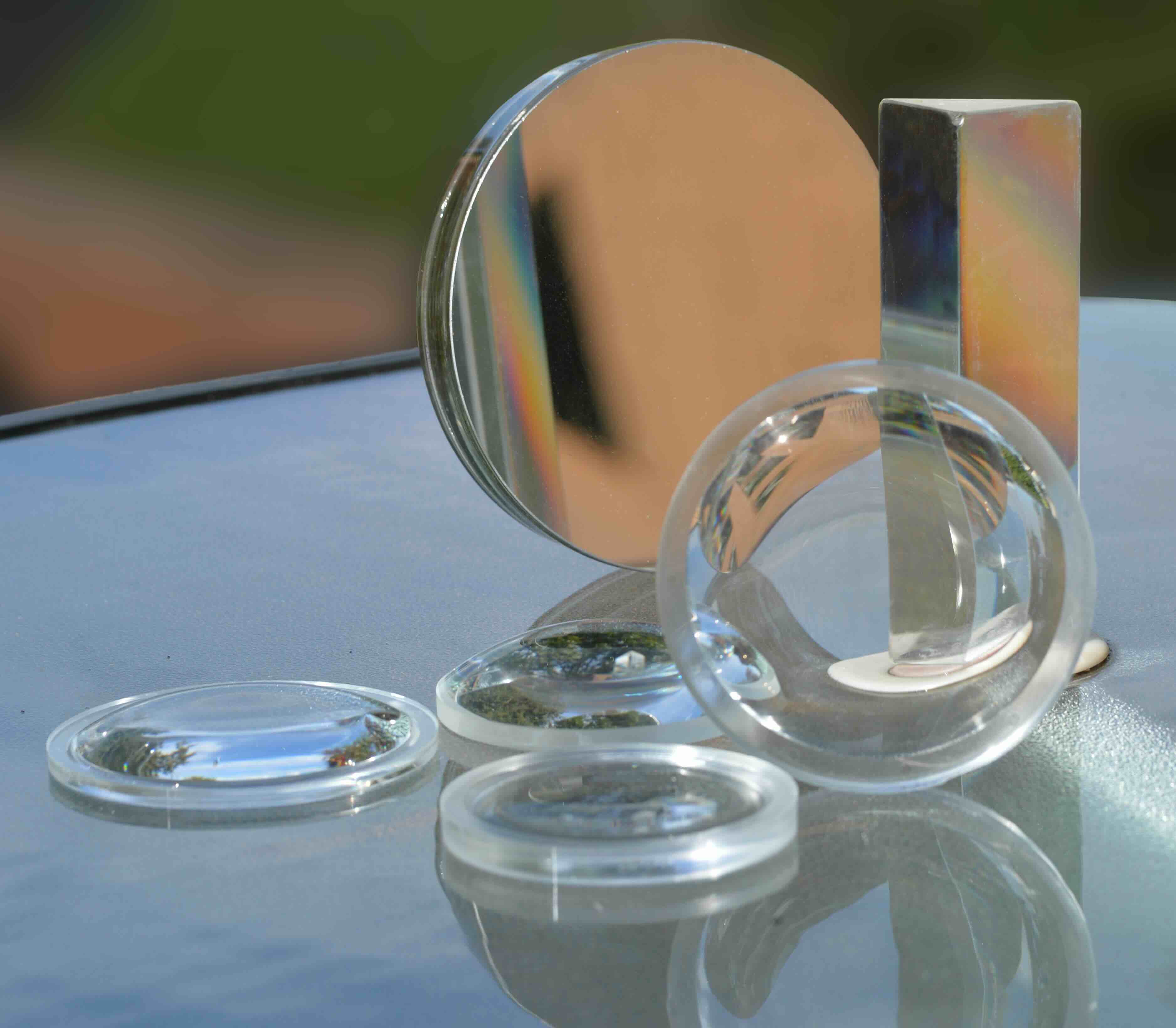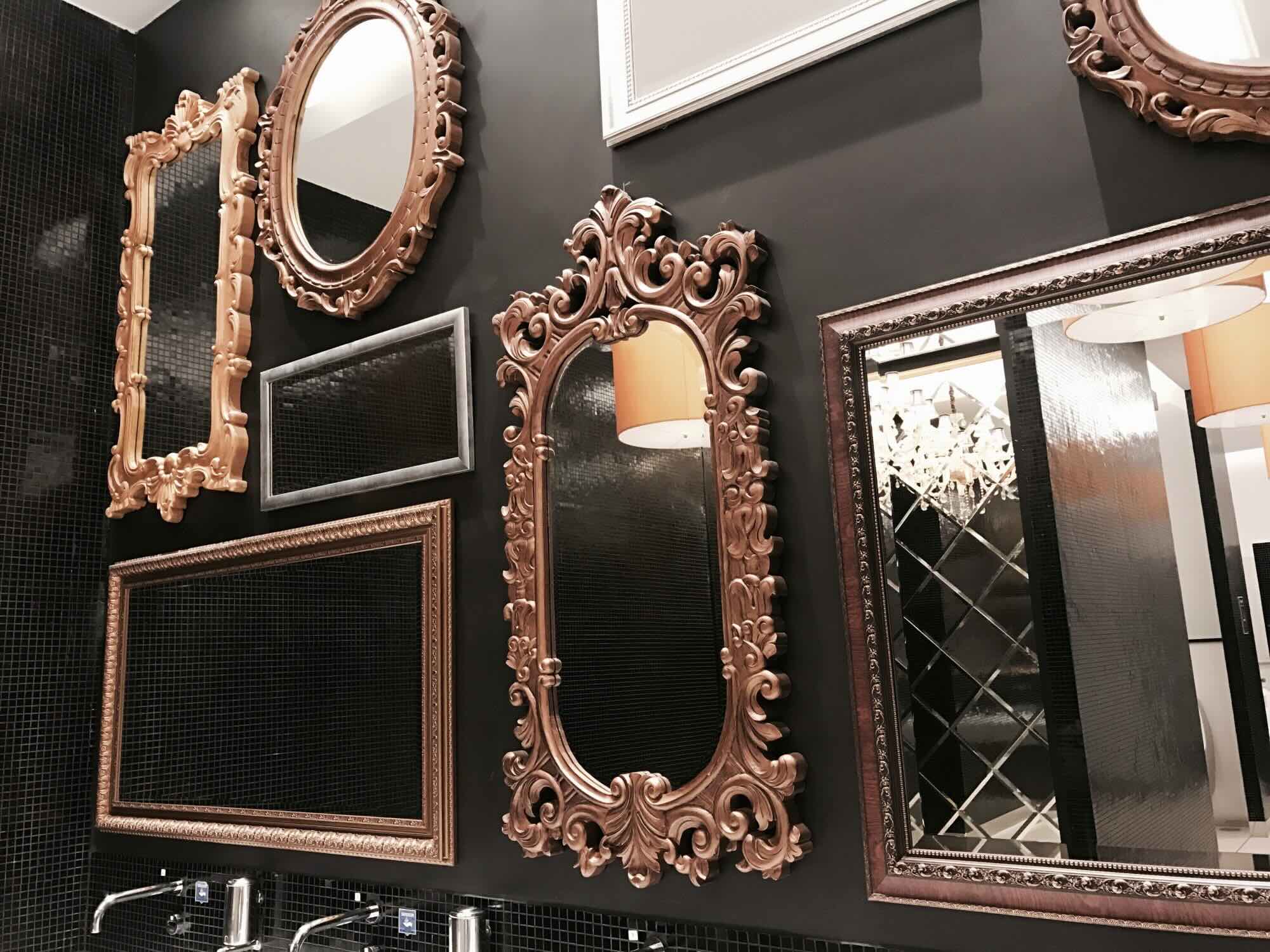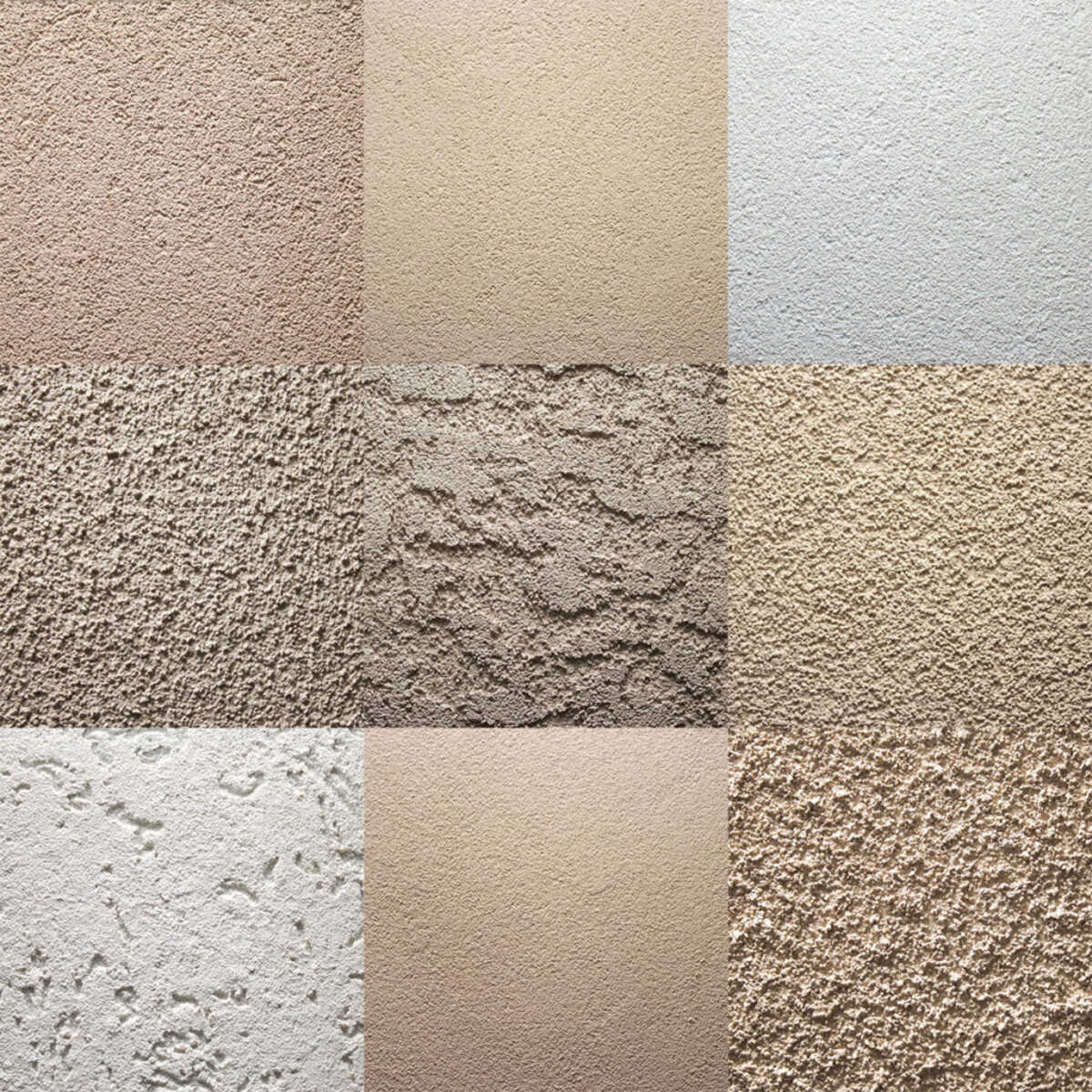Home>Articles>What Are The Different Types Of Mirrors And Lenses


Articles
What Are The Different Types Of Mirrors And Lenses
Modified: October 20, 2024
Discover the various types of mirrors and lenses through our informative articles. Explore the world of optics and learn about reflection, refraction, and more.
(Many of the links in this article redirect to a specific reviewed product. Your purchase of these products through affiliate links helps to generate commission for Storables.com, at no extra cost. Learn more)
Introduction
Welcome to the fascinating world of mirrors and lenses! These remarkable optical devices play an integral role in our everyday lives, from helping us see our reflections to enabling us to capture stunning images with cameras. Mirrors and lenses are widely used in various applications, including microscopy, telescopes, eyeglasses, and even laser technology. In this article, we will explore the different types of mirrors and lenses and delve into their unique characteristics and functions.
Mirrors are essentially surfaces that reflect light, resulting in an image that we can perceive and interpret. On the other hand, lenses are transparent objects that refract or bend light, enabling us to manipulate and focus it. Both mirrors and lenses exhibit distinct properties and are crucial in the field of optics.
In the following sections, we will discuss the different types of mirrors and lenses, highlighting their features and applications. So, let’s embark on this optical journey and uncover the wonders of mirrors and lenses together!
Key Takeaways:
- Mirrors and lenses are essential optical devices that shape our daily lives, from personal grooming to scientific exploration, and play a crucial role in enhancing our vision and understanding of the world.
- Understanding the unique properties and applications of mirrors and lenses allows us to appreciate their significant role in advancing technology, expanding our knowledge, and unlocking new possibilities in the fascinating world of optics.
Read more: What Are The Different Types Of Curtains
Mirrors
Mirrors are fascinating objects that reflect light, allowing us to see ourselves and the world around us. They have been used for centuries and have evolved into various types with unique properties and applications. Let’s take a closer look at the different types of mirrors:
1. Plane Mirror
A plane mirror, also known as a flat mirror, is the most common type of mirror we encounter in our daily lives. It has a flat reflective surface, which produces a virtual image that appears to be the same size and distance as the object. Plane mirrors are widely used in homes, dressing rooms, and bathrooms for personal grooming and reflection purposes.
They are also utilized in optical devices like periscopes and kaleidoscopes, where multiple reflections create mesmerizing patterns and images.
2. Concave Mirror
A concave mirror, also referred to as a converging mirror, curves inward and has a reflective surface on the inner side. This shape causes the reflected light to converge at a focal point in front of the mirror. Concave mirrors are commonly used in telescopes and satellite dishes to collect and focus incoming light. They can also produce magnified and real images, making them suitable for applications in shaving and makeup mirrors.
3. Convex Mirror
A convex mirror, also known as a diverging mirror, curves outward and has a reflective surface on the outer side. The curvature of the mirror causes the reflected light to diverge, creating a wider field of view. Convex mirrors are often found in places such as parking lots, hallways, and tight corners to provide a better view of a larger area. They produce a virtual image that is smaller and located behind the mirror, making them useful for security and surveillance purposes.
Furthermore, convex mirrors are utilized in vehicle side-view mirrors, enabling drivers to have a wider perspective of their surroundings.
Mirrors serve a crucial role in our lives, not only for personal reflection but also in various fields such as astronomy, photography, and scientific research. Understanding the different types of mirrors and their specific properties allows us to make the best use of these incredible optical devices.
Now that we have explored the world of mirrors, let’s continue our journey and discover the intriguing realm of lenses.
Read more: What Are The Different Types Of Screwdriver
Plane Mirror
A plane mirror, also known as a flat mirror, is the simplest and most common type of mirror. It consists of a flat reflective surface that produces a virtual image. The virtual image appears to be the same size and distance as the object being reflected. Plane mirrors are widely used in our daily lives and have various applications.
The reflective surface of a plane mirror is typically made of glass coated with a thin layer of metal, such as aluminum or silver. This coating allows the mirror to reflect light efficiently. When light rays hit the mirror surface, they undergo specular reflection, which means they bounce off the mirror at the same angle at which they hit it. This reflection process creates an image that we can perceive with our eyes.
One of the most common applications of plane mirrors is personal grooming. We use them in bathrooms, bedrooms, and dressing rooms to see our reflections and adjust our appearance. Plane mirrors are also used in the entertainment industry, specifically in the construction of stage sets. They create the illusion of a larger space by reflecting the images of the actors and scenery.
In addition to personal and entertainment use, plane mirrors play a role in scientific experiments and education. They are utilized in optical instruments like periscopes and kaleidoscopes. Periscopes use multiple plane mirrors to redirect light and allow us to see objects that are not directly in our line of sight. Kaleidoscopes, on the other hand, use three plane mirrors to create mesmerizing and symmetrical patterns by reflecting and multiplying the objects inside.
Plane mirrors also have applications in the field of physics and optics education. They are used in experiments to study the principles of reflection, such as measuring angles of incidence and reflection. These experiments help students understand and appreciate the behavior of light when it interacts with mirrors.
Overall, plane mirrors are a fundamental and versatile type of mirror. Their simplicity and ubiquity make them indispensable in our daily lives. Whether we are checking our reflection, creating illusions on stage, or conducting scientific experiments, plane mirrors continue to be an integral part of our visual experiences.
Now that we have explored plane mirrors, let’s move on to the next type of mirror, the concave mirror.
Concave Mirror
A concave mirror, also known as a converging mirror, is a type of mirror with a curved reflective surface that curves inward. The inner surface is coated with a reflective material, typically metal, allowing it to reflect light. Concave mirrors are widely used in various applications due to their unique properties.
One of the notable characteristics of a concave mirror is its ability to converge light. When parallel rays of light strike the surface of a concave mirror, they are reflected in such a way that they converge at a specific point called the focal point. This ability to converge light makes concave mirrors useful in applications where focusing or magnification is required.
In optical devices such as telescopes, concave mirrors are used as the primary mirror to collect and focus incoming light. The curved surface of the mirror enables it to bring the light to a single point, resulting in a clearer and magnified image. Similarly, in satellite dishes, concave mirrors are used to collect and concentrate radio waves, allowing for effective communication over long distances.
Another application of concave mirrors is in shaving and makeup mirrors. The concave shape allows these mirrors to produce magnified images of the face, making it easier to see fine details and achieve precise grooming or makeup application. The magnification effect is achieved by positioning the object (such as the face) beyond the focal point, causing the reflected rays to diverge, resulting in an enlarged image.
Additionally, concave mirrors find use in scientific experiments and research. They are utilized in laboratories to study the behavior of light and the properties of optics. By manipulating the position of the object in relation to the focal point, scientists can observe different characteristics of the reflected image and conduct experiments on reflection, refraction, and magnification.
Concave mirrors have also found practical applications in the automotive industry. They are used in vehicle headlights and reflectors to focus and direct light, providing better visibility for drivers during nighttime driving.
Overall, concave mirrors are versatile optical devices that have various applications due to their unique curvature and ability to focus light. Whether in telescopes, bathroom mirrors, or scientific research, concave mirrors continue to play an important role in our lives by allowing us to see clearer, magnified images and understand the behavior of light.
Now, let’s move on to explore another type of mirror, the convex mirror.
Convex Mirror
A convex mirror, also known as a diverging mirror, is a type of mirror with a curved reflective surface that bulges outward. The outer surface of the mirror is coated with a reflective material, typically metal, allowing it to reflect light. Convex mirrors have unique properties that make them suitable for specific applications.
One distinctive characteristic of a convex mirror is its ability to diverge light. When parallel rays of light strike the surface of a convex mirror, they are reflected in such a way that they diverge or spread out. This property enables convex mirrors to provide a wider field of view compared to other types of mirrors.
Due to their wide field of view, convex mirrors are commonly used in areas where a broad perspective is necessary. You can often find convex mirrors installed in parking lots, intersections, and driveways to provide drivers with a greater view of their surroundings. They help prevent blind spots and assist in detecting oncoming vehicles or pedestrians.
Another advantage of convex mirrors is their ability to produce virtual images. Unlike concave mirrors that create real images, convex mirrors produce virtual images that are formed behind the mirror. These virtual images appear smaller than the actual object being reflected. This property makes convex mirrors ideal for security and surveillance applications.
In retail stores, convex mirrors are strategically placed to eliminate blind spots and discourage shoplifting. The wide-angle view provided by convex mirrors allows store owners and security personnel to monitor a larger area and maintain better visibility over the store floor.
Convex mirrors are also commonly used as side-view mirrors in vehicles. They provide a wider field of view, helping drivers to see objects and vehicles in adjacent lanes. The convex shape compensates for the driver’s blind spots and improves overall road safety.
Furthermore, convex mirrors find applications in decorative or aesthetic purposes. They are sometimes used as decorative elements in gardens or outdoor spaces, adding an interesting visual element to the environment.
Convex mirrors have a range of practical uses due to their ability to provide a wider field of view and produce virtual images. Whether in traffic management, security surveillance, or decorative settings, convex mirrors continue to play a vital role in enhancing safety and improving visibility.
Now that we have explored the different types of mirrors, let’s move on to the fascinating world of lenses.
Lenses
Lenses are transparent objects, usually made of glass or plastic, that have curved surfaces. They are widely used in various fields, from vision correction to photography and scientific research. Lenses have the ability to refract or bend light, allowing them to manipulate and focus the light rays. Let’s delve into the different types of lenses and their applications:
Read more: What Are The Different Types Of Insulation
1. Convex Lens
A convex lens, also known as a converging lens or a positive lens, is thicker at the center and thinner at the edges. It has a curved surface that bulges outward. Convex lenses have the property of converging light rays, causing them to come together at a focal point. This makes convex lenses useful for magnification and focusing applications.
Convex lenses are commonly used in eyeglasses to correct nearsightedness and farsightedness. By converging the light rays, convex lenses help to properly focus the images on the retina, allowing individuals with vision issues to see clearly.
In addition to vision correction, convex lenses are also used in various optical instruments, such as cameras and telescopes. They allow for the magnification and focusing of distant objects, enabling us to capture detailed images and explore the wonders of the universe.
2. Concave Lens
A concave lens, also known as a diverging lens or a negative lens, is thinner at the center and thicker at the edges. It has a curved surface that bulges inward. Concave lenses have the property of diverging light rays, causing them to spread out. This makes concave lenses ideal for applications where the goal is to disperse or weaken the light.
Concave lenses are commonly used in vision correction for individuals with specific eye conditions, such as astigmatism. They help to spread out the light rays, allowing for proper focus on the retina and correction of visual abnormalities.
Furthermore, concave lenses are used in certain optical devices, such as microscopes and projectors. They help to magnify and disperse light, allowing for detailed examination of microscopic objects and projection of images onto screens or surfaces.
3. Plano-Convex Lens
A plano-convex lens has one flat surface and one convex surface. It is widely used in applications where focusing and magnification are required. The curved surface of the lens allows for the converging of light rays, while the flat surface helps to create a clear image.
Plano-convex lenses find applications in photography, slide projectors, and barcode scanners, among others. They help to focus light and produce sharp, magnified images.
4. Plano-Concave Lens
A plano-concave lens has one flat surface and one concave surface. It is used to diverge light rays and create virtual, smaller images. Plano-concave lenses find applications in optical systems where a wider field of view is desired, as well as in vision correction for specific eye conditions.
Overall, lenses are essential optical elements that enable us to correct vision, capture stunning photographs, and study the properties of light. Understanding the different types of lenses and their applications allows us to appreciate their significance in our daily lives and technological advancements.
As we conclude our exploration of lenses, let’s reflect on the captivating world of mirrors and lenses and the incredible ways they shape our perception and understanding of light and optics.
Read more: What Are The Different Types Of Gutters
Convex Lens
A convex lens, also known as a converging lens or a positive lens, is one of the most commonly used types of lenses. It is characterized by its thicker center and thinner edges, with a curved surface that bulges outward. Convex lenses are widely employed in various fields and applications due to their unique properties.
One of the primary characteristics of a convex lens is its ability to converge light rays. When parallel rays of light pass through a convex lens, they are refracted, or bent, towards the center of the lens. This refraction causes the light rays to converge at a point known as the focal point. The distance between the center of the lens and the focal point is known as the focal length.
This converging nature of convex lenses makes them useful in applications where magnification and focusing of light are required. Convex lenses are commonly used in vision correction, particularly for individuals with farsightedness. By converging the incoming light rays, convex lenses help to properly focus the images on the retina, allowing for clearer vision.
In addition to vision correction, convex lenses have extensive applications in the field of optics. They are a key component in optical instruments such as cameras, binoculars, and telescopes. The converging property of convex lenses enables these devices to capture and focus distant objects, allowing us to observe them with great detail.
Convex lenses are also crucial in the field of microscopy. Microscopes utilize multiple convex lenses to magnify small objects and provide a clear view of microscopic details. The combination of convex lenses in a microscope allows for high-resolution imaging and examination of specimens in various scientific fields, including biology and materials science.
Furthermore, convex lenses play a significant role in various imaging systems and projectors. They help to focus light rays onto a screen or surface, producing enlarged and clear images. Convex lenses are commonly used in slide projectors, movie projectors, and overhead projectors to display images and presentations for educational and entertainment purposes.
Overall, the convex lens is a versatile and indispensable optical device. Its ability to converge light and create magnified images has applications ranging from vision correction to photography and scientific research. Convex lenses not only enhance our ability to see and understand the world, but they also enable us to capture and explore the wonders of the universe.
Now that we have explored the properties and applications of convex lenses, let’s move on to the next type of lens, the concave lens.
Concave Lens
A concave lens, also known as a diverging lens or a negative lens, is a type of lens with a thinner center and thicker edges. It has a curved surface that bulges inward, giving it a bowl-like shape. Concave lenses are widely used in various applications due to their unique properties and behavior when light passes through them.
One of the key characteristics of a concave lens is its ability to diverge light rays. When parallel rays of light pass through a concave lens, they are refracted, or bent, away from the center of the lens. This refraction causes the light rays to spread out, resulting in the divergence of the rays. This property makes concave lenses useful in applications where the goal is to disperse or weaken the light.
One of the significant applications of concave lenses is in correcting certain vision problems. Concave lenses are commonly used to correct nearsightedness or myopia. In nearsighted individuals, the light entering the eye focuses in front of the retina instead of directly on it. By using concave lenses, the incoming light rays are spread out, allowing them to properly converge on the retina and create clear vision.
Concave lenses also find applications in various optical devices and systems. They are used in combination with other lenses in microscopes, cameras, and telescopes to control and modify the path of light. In these devices, concave lenses help to create a wider field of view and correct optical aberrations, resulting in improved imaging quality.
Furthermore, concave lenses play a crucial role in different scientific experiments and research. They are utilized in the field of physics to study the behavior of light and the principles of optics. By manipulating the position of the object and the lens, scientists can observe the effects of concave lenses on the refracted light, leading to a better understanding of the properties of light.
In addition to scientific applications, concave lenses also find use in specific industries. They are utilized in the field of photography to create unique artistic effects, such as vignetting or creating a “fish-eye” perspective. Concave lenses are also used in laser technology and spectral analysis to disperse light and analyze its properties.
Overall, concave lenses are essential optical devices that have a range of applications. Their ability to disperse light and correct vision problems makes them valuable in various fields, from optometry to scientific research. Understanding the properties and applications of lenses allows us to utilize them effectively and explore the wonders of optics.
Now, let’s move on to the next topic and explore another type of lens, the plano-convex lens.
Plano-Convex Lens
A plano-convex lens is a type of lens that has one flat surface (known as the plano side) and one convex curved surface. The shape of the lens resembles a magnifying glass, with the convex side bulging outward. Plano-convex lenses are widely used in various applications due to their unique optical properties.
The flat surface of the plano-convex lens allows for easy handling and mounting in optical systems. The convex curved surface is designed to converge light rays towards a focal point. When parallel rays of light pass through the lens, they are refracted (bent) towards the center, causing them to converge at a specific point known as the focal point.
This focusing property of plano-convex lenses makes them suitable for numerous applications. One of the primary uses of plano-convex lenses is in imaging systems and cameras. When light passes through the lens, it converges at the focal point, creating a clear and magnified image on the image sensor or film. Plano-convex lenses are often used in the construction of magnifying lenses, telescopes, and cameras to capture sharp and detailed images.
Plano-convex lenses also play a critical role in the field of microscopy. Microscopes utilize a combination of lenses, including plano-convex lenses, to magnify small objects and allow for detailed examination. These lenses help to focus and direct light, enabling scientists and researchers to observe microscopic structures and study samples with high resolution.
In addition to optics and microscopy, plano-convex lenses find applications in beam focusing and collimating light. They are used in lasers and optical systems to concentrate light into a narrow beam or achieve parallel light rays. The converging properties of these lenses allow for precision focusing and controlling the direction of light, making them crucial in laser technology and other industrial applications.
Furthermore, plano-convex lenses are utilized in barcode readers and scanners. The converging surface of the lens helps to focus the laser beam onto the barcode, ensuring accurate scanning and decoding. These lenses are also employed in projectors to focus light onto a screen or display, resulting in clear and well-defined images.
Overall, plano-convex lenses are versatile optical components that are indispensable in many fields. Their ability to focus and magnify light makes them valuable in imaging systems, microscopy, lasers, and other applications. Whether capturing detailed images or manipulating light for various purposes, plano-convex lenses continue to play a significant role in advancing technology and enhancing our understanding of optics.
Now that we have explored plano-convex lenses, let’s move on to the next type of lens, the plano-concave lens.
When learning about mirrors and lenses, it’s important to understand the differences between concave and convex mirrors, as well as converging and diverging lenses. This will help you understand their unique properties and applications.
Plano-Concave Lens
A plano-concave lens, as the name suggests, is a lens with one flat surface (plano side) and one concave curved surface. The concave side is shaped like a bowl, curving inward. Plano-concave lenses have unique properties that make them valuable in a variety of optical applications.
The flat surface of a plano-concave lens makes it easy to handle and mount in optical systems. The concave curved surface is designed to diverge, or spread out, the incoming light rays. When parallel rays of light pass through the lens, they are refracted (bent) away from the center, causing the rays to spread out.
Due to their diverging properties, plano-concave lenses are commonly used in optics for a range of applications. One of the key uses of plano-concave lenses is in correcting vision problems. They are frequently employed to correct farsightedness (hyperopia). In farsighted individuals, the light rays entering the eye focus behind the retina instead of directly on it. Plano-concave lenses help by allowing the incoming light to spread out, enabling proper focus on the retina and providing clearer vision.
Plano-concave lenses are also crucial components in various optical systems. They are used in conjunction with other lenses to control and manipulate light. By dispersing and spreading out light, these lenses are employed to adjust the focus, correct aberrations, and manage the path of light in optical devices such as microscopes, cameras, and projectors.
Furthermore, plano-concave lenses find use in scientific experiments and research. Their diverging properties enable scientists to study the behavior of light and explore the principles of optics. By manipulating the position and orientation of the lens, researchers can observe the effects of plano-concave lenses on light rays, enhancing their understanding of light’s characteristics and properties.
Plano-concave lenses also have applications in imaging and beam expansion. They are utilized to disperse light and create virtual, smaller images. Additionally, these lenses are employed in collimation and beam expansion, ensuring parallel light rays and uniform illumination in various industrial and scientific settings.
Overall, plano-concave lenses are versatile optical devices with several applications. Their diverging properties, correction of vision problems, and manipulation of light rays make them essential in optometry, scientific research, and various optical systems. Understanding the unique characteristics and applications of plano-concave lenses allows us to harness their benefits in advancing technology and expanding our understanding of optics.
With the exploration of plano-concave lenses, we have covered the different types of lenses. Now, let’s summarize our journey and reflect on the incredible world of mirrors and lenses.
Read more: What Are The Different Types Of Rugs
Conclusion
Throughout this article, we have explored the fascinating world of mirrors and lenses, optical devices that play a fundamental role in our lives and the field of optics. Mirrors, with their ability to reflect light and produce images, serve various purposes, from personal grooming to scientific exploration.
We started by examining plane mirrors, which are commonly found in our surroundings, allowing us to see our reflections and creating captivating visual effects in optical devices like kaleidoscopes. We then moved on to concave mirrors, which converge light and find applications in telescopes, satellite dishes, and personal grooming mirrors. Convex mirrors, on the other hand, diverge light and provide a wider field of view, making them valuable in security systems and side-view mirrors in vehicles.
Shifting our focus to lenses, we explored the different types and their unique properties. Convex lenses, with their converging nature, correct vision problems and are essential in cameras, telescopes, and microscopes for magnification and focusing. Concave lenses, with their ability to diverge light, are used in vision correction and contribute to the field of scientific research and optical instruments.
We also delved into the significance of plano-convex lenses, which combine a flat surface with a convex curved surface to focus and magnify light. These lenses are utilized in imaging systems, microscopes, and projectors. Lastly, we explored the applications of plano-concave lenses, which disperse light and find use in correcting vision issues and manipulating light paths in diverse optical systems.
Whether it is capturing stunning images, correcting vision, exploring the mysteries of the universe, or understanding the properties of light, mirrors and lenses continue to shape our perception and drive advancements in technology and scientific research.
As we conclude our journey through the world of mirrors and lenses, it is clear that these optical devices have become integral to our daily lives and the progress of various industries. By understanding their unique properties and applications, we can appreciate the significant role they play in enhancing our vision, expanding our knowledge, and unlocking new possibilities.
So, the next time you look in the mirror or peer through a camera lens, take a moment to marvel at the intricate world of optics and the incredible impact it has on our lives.
Frequently Asked Questions about What Are The Different Types Of Mirrors And Lenses
Was this page helpful?
At Storables.com, we guarantee accurate and reliable information. Our content, validated by Expert Board Contributors, is crafted following stringent Editorial Policies. We're committed to providing you with well-researched, expert-backed insights for all your informational needs.












0 thoughts on “What Are The Different Types Of Mirrors And Lenses”